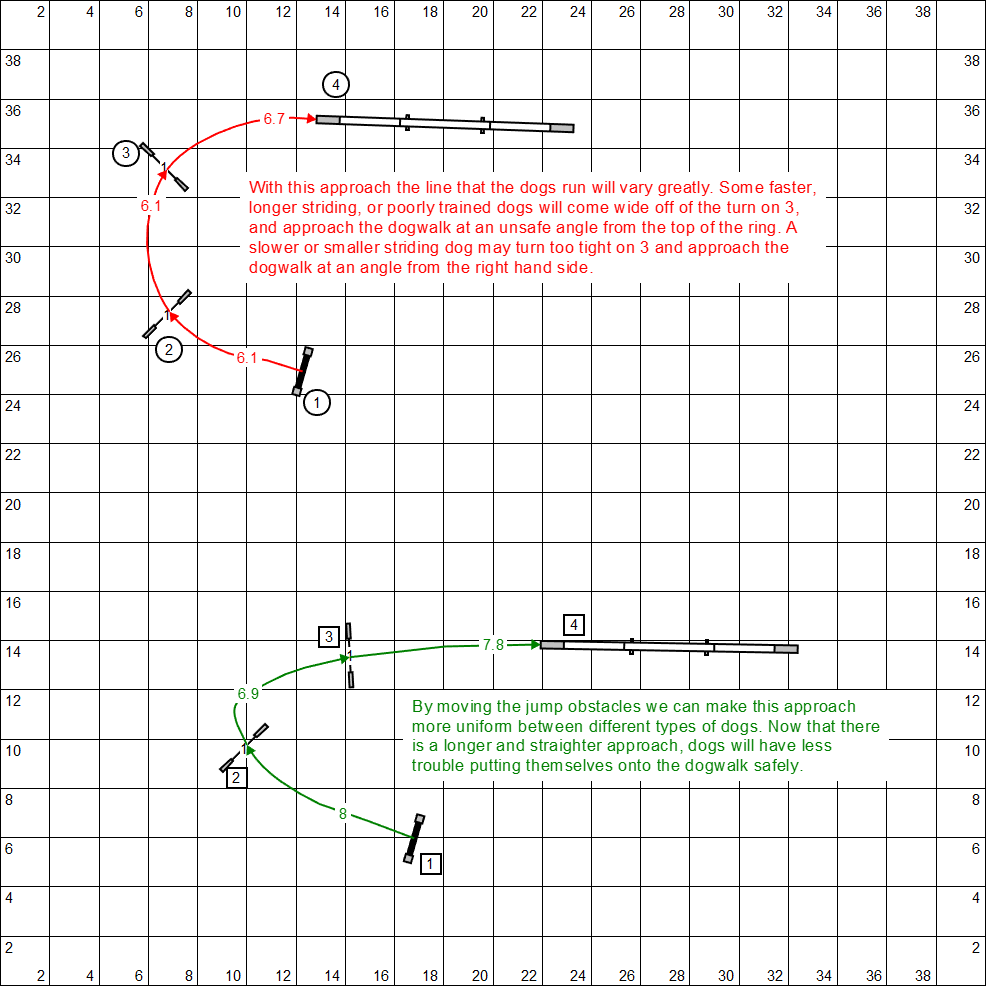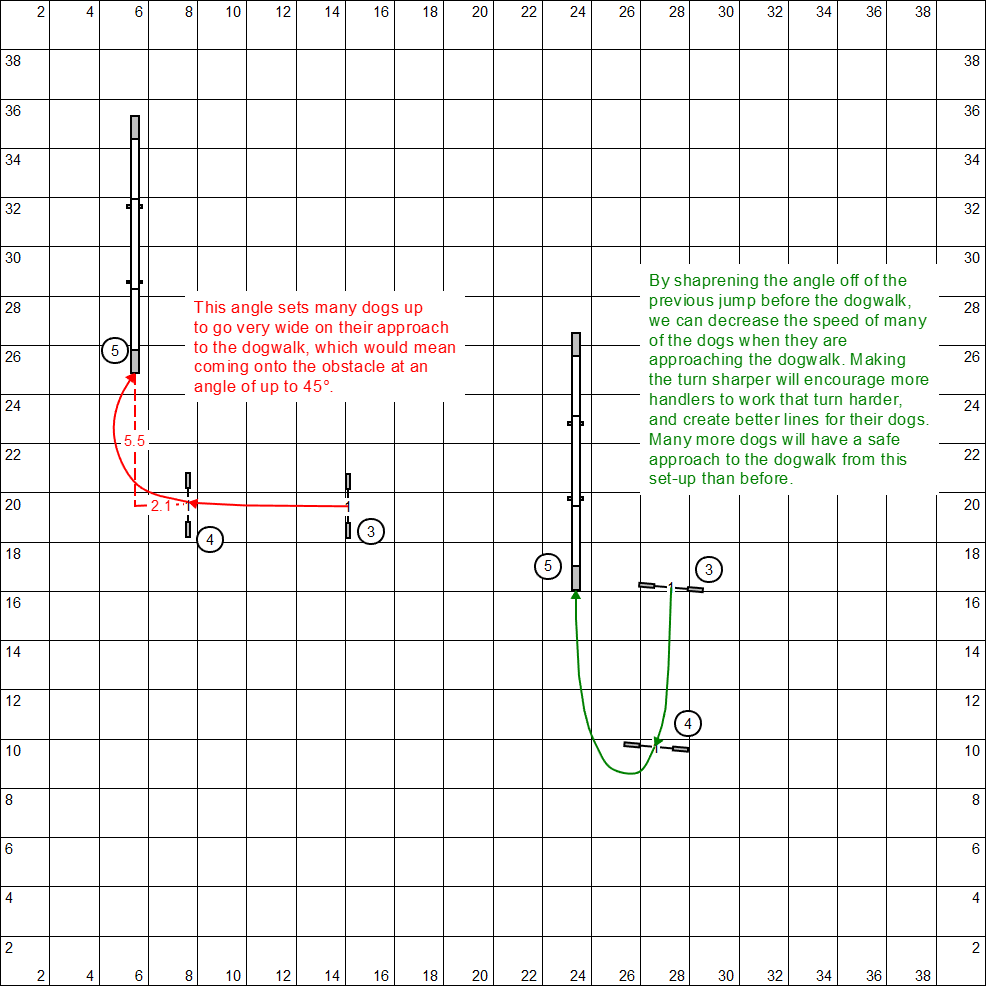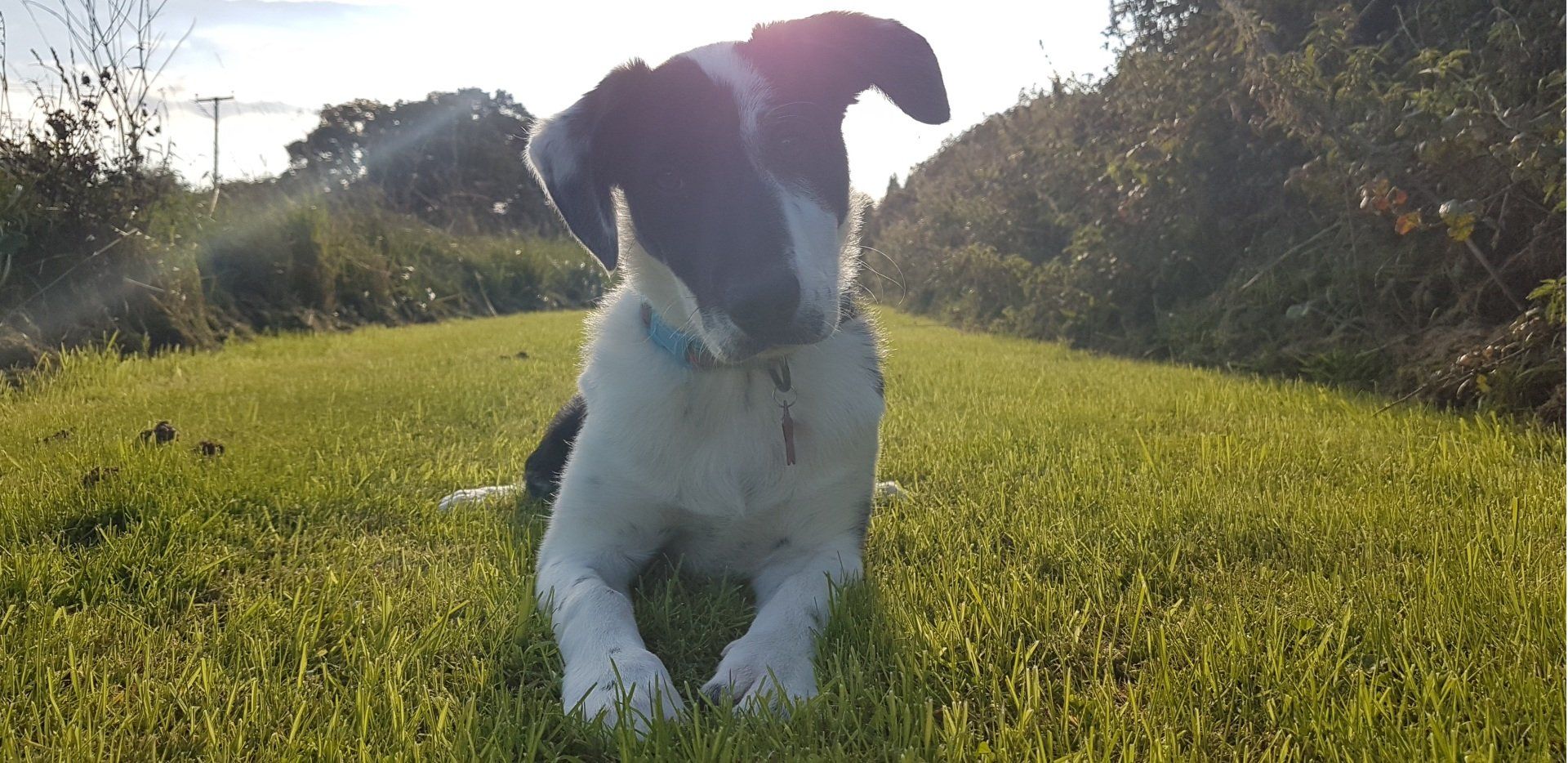Dog Walk Approaches
- by Jason Bartram
- •
- 04 Mar, 2019
- •
I recently saw a post on Facebook which contained a link to a page of the AKC Agility Judges website. The link was to a blog post about dogwalk angles and approaches and what we as judges could do to make them as safe as possible. The article showed a few 'before' and 'after' pictures of course plans that had been edited to become 'safe'.
While I appreciate that this was a free and somewhat useful resource to judges, of which there are very few, there were still a number of issues in my opinion. I have created this post to review some of the course plans that were in the AKC Judges blog post, and hopefully to explain why I felt they needed to be changed.
Below are some course plans of my own design that have been made to reflect what some judges may currently deem 'safe' and what we could do to make them safer.
While I appreciate that this was a free and somewhat useful resource to judges, of which there are very few, there were still a number of issues in my opinion. I have created this post to review some of the course plans that were in the AKC Judges blog post, and hopefully to explain why I felt they needed to be changed.
Below are some course plans of my own design that have been made to reflect what some judges may currently deem 'safe' and what we could do to make them safer.
1.

The first sequence in the top left of the image mirrors one of the sequences that was deemed 'safe' due to the distances between the end of the tunnel and the up plank of the dogwalk. Although this is more acceptable than perhaps the same sequence with smaller gaps, it leaves the possibility for the dog to run a wide arc out of the tunnel, and then to hit the dogwalk from the side - not very safe.
In the next sequence, annotated in green, the approach to the dogwalk is a completely straight line, leaving very little scope for the dog to get himself onto a bad line when attempting the dogwalk.
In the next sequence, annotated in green, the approach to the dogwalk is a completely straight line, leaving very little scope for the dog to get himself onto a bad line when attempting the dogwalk.
2.

In this plan, the top sequence appears to be safe at the first glance, but as judges we must take into account the variance in dogs' lines within any given class. Big, fast, wide turning dogs may well approach this dogwalk with a very poor line. On the other hand, smaller, slower or more tight-turning dogs may approach at too sharp an angle.
In the green sequence where the jumps have each been moved slightly, there is now a very safe approach from jump number 3.
In the green sequence where the jumps have each been moved slightly, there is now a very safe approach from jump number 3.
3.

This image is the worst approach to the dogwalk that was in the AKC document, and the one that provoked me into writing this. In the first image, the straight line from 3 to 4 will create a lot of speed in many dogs, especially larger breeds. This will almost guarantee that, if the handler does not heavily manage the turn, many dogs will run extremely wide, and come at the dog walk with a very angled approach. The AKC claimed that allowing 8 feet away from the jump laterally, and 18 feet away longitudinally, the dog would have time to straighten his approach. This, however, is not always true, as all dogs are different, and while this might be a big enough gap for some dogs, we cannot guarantee that it will be safe for all dogs.
In the second image I have used a wingwrap before the dogwalk in order to create a more similar line for all dogs. Wingwrap tests encourage handlers to manage their dogs, as classes can be won or lost based on how tight your dog can wrap. Because the turn is almost 180°, if the dog goes wide, they are fairly likely to still be on a safe line to the dogwalk.
In the second image I have used a wingwrap before the dogwalk in order to create a more similar line for all dogs. Wingwrap tests encourage handlers to manage their dogs, as classes can be won or lost based on how tight your dog can wrap. Because the turn is almost 180°, if the dog goes wide, they are fairly likely to still be on a safe line to the dogwalk.
Have any questions about this? Send me a message to www.facebook.com/Celestine-Dog-Training

The whole point of socialising a new dog or puppy is to ensure that they are happy with new people, dogs, or places. This cannot be achieved by thrusting your young dog into a situation they they cannot or do not know how to handle. For this reason it is a good idea to keep socialisation sessions short - under a minute at a time of face to face contact with a new person or dog is best when puppy is just starting out. This way, you can check that the dog is happy with the session every few minutes, and reward the puppy for tolerating the new person or dog.
It is important to always leave your puppy with an escape route. If they are finding the situation too intense or too frightening they must have a way to remove themselves from that situation. Not allowing the puppy to get away will increase stress and anxiety and create a negative connotation with encountering the same circumstances again.
It is important to always leave your puppy with an escape route. If they are finding the situation too intense or too frightening they must have a way to remove themselves from that situation. Not allowing the puppy to get away will increase stress and anxiety and create a negative connotation with encountering the same circumstances again.
